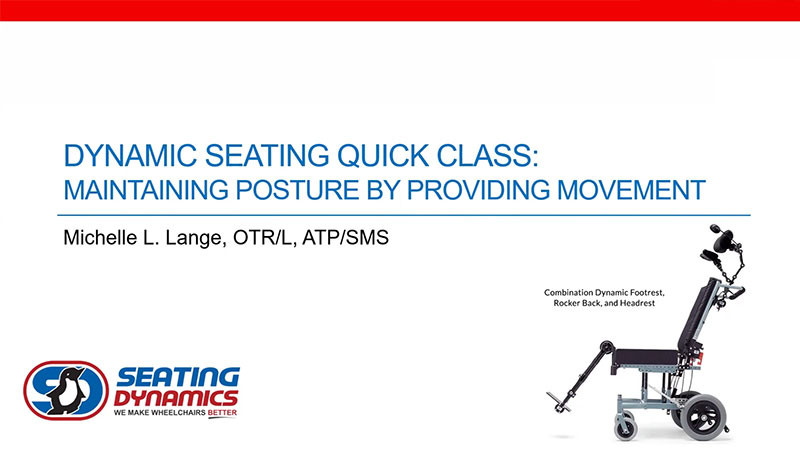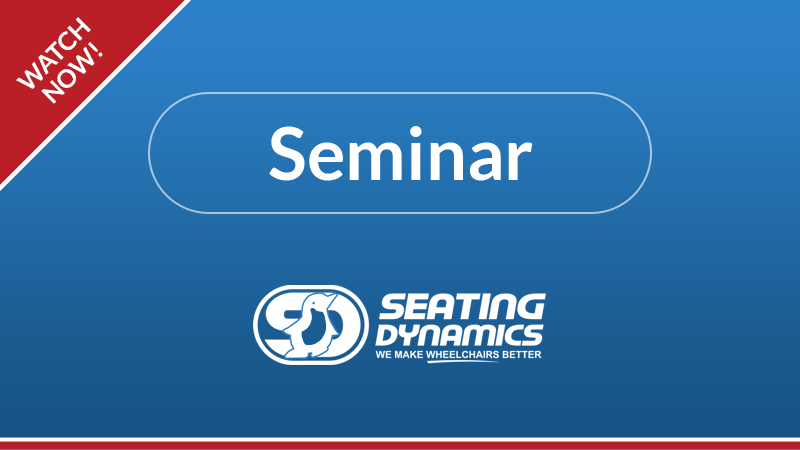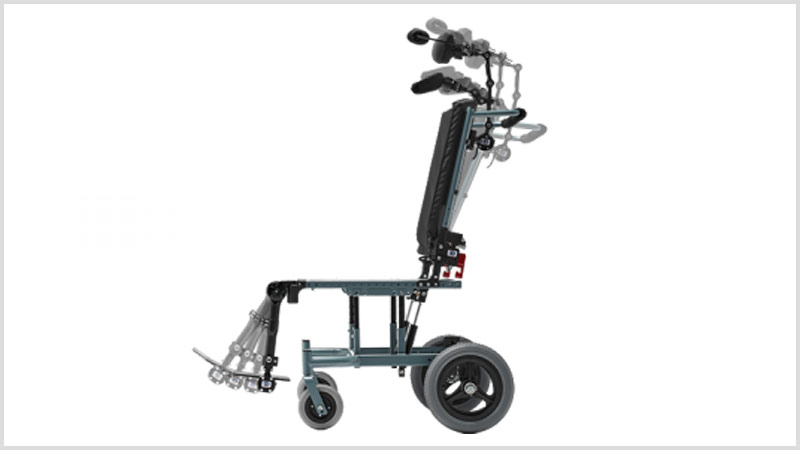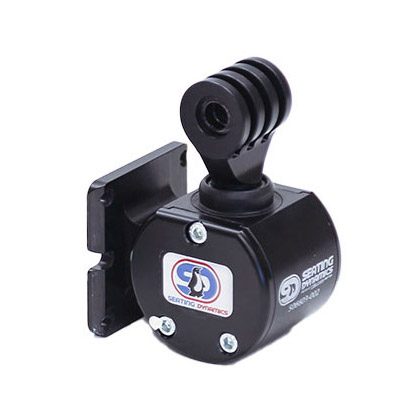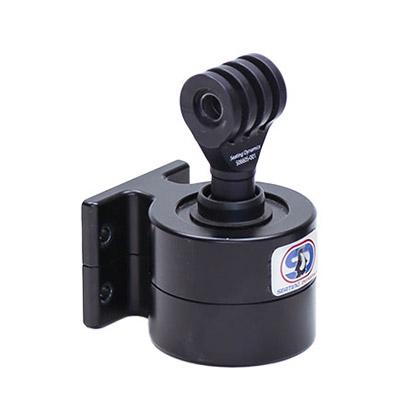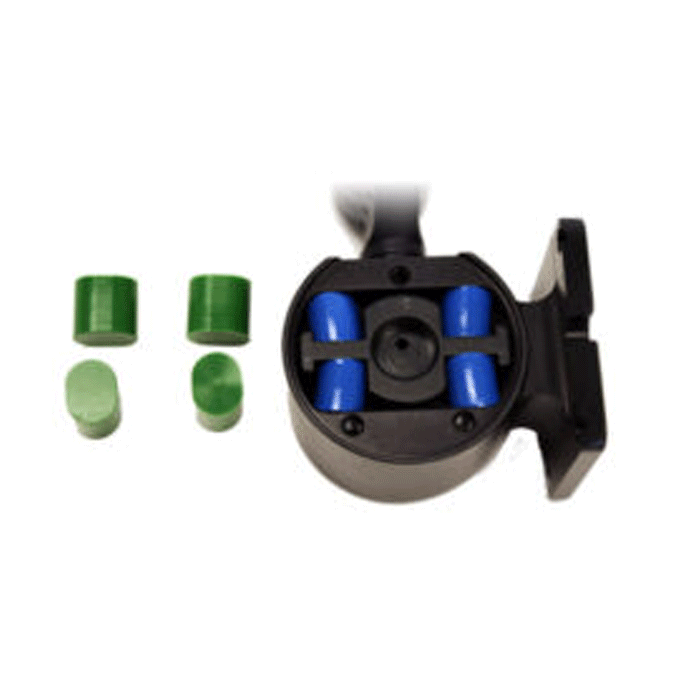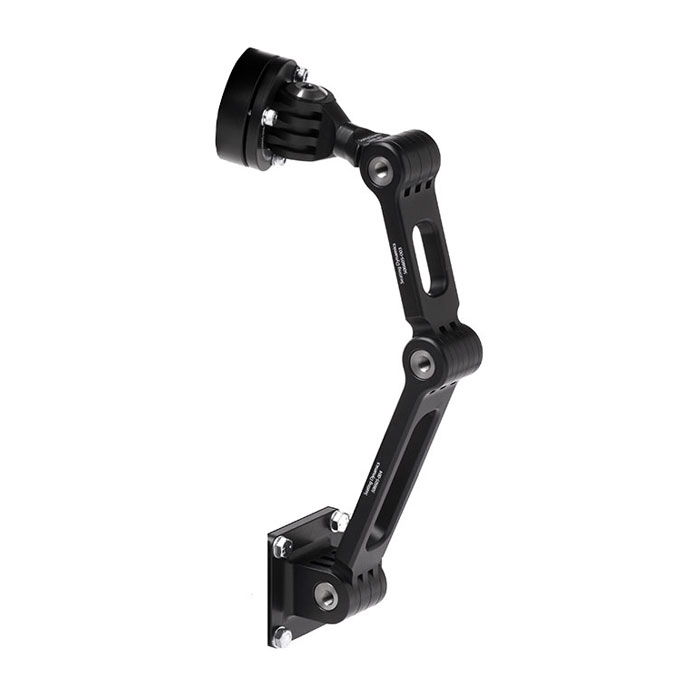Dynamic Head Support Hardware
The Seating Dynamics' Dynamic Head Support Hardware allows neck extension, diffusing and absorbing force to protect the client, protect the hardware, and reduce overall extensor tone. It can be used on its own or in combination with the Dynamic Rocker Back and/or Dynamic Footrests to maximize desired outcomes. The Dynamic Head Support Hardware moves posteriorly in response to both posterior and rotational movement. It is compatible with a variety of head support pads.
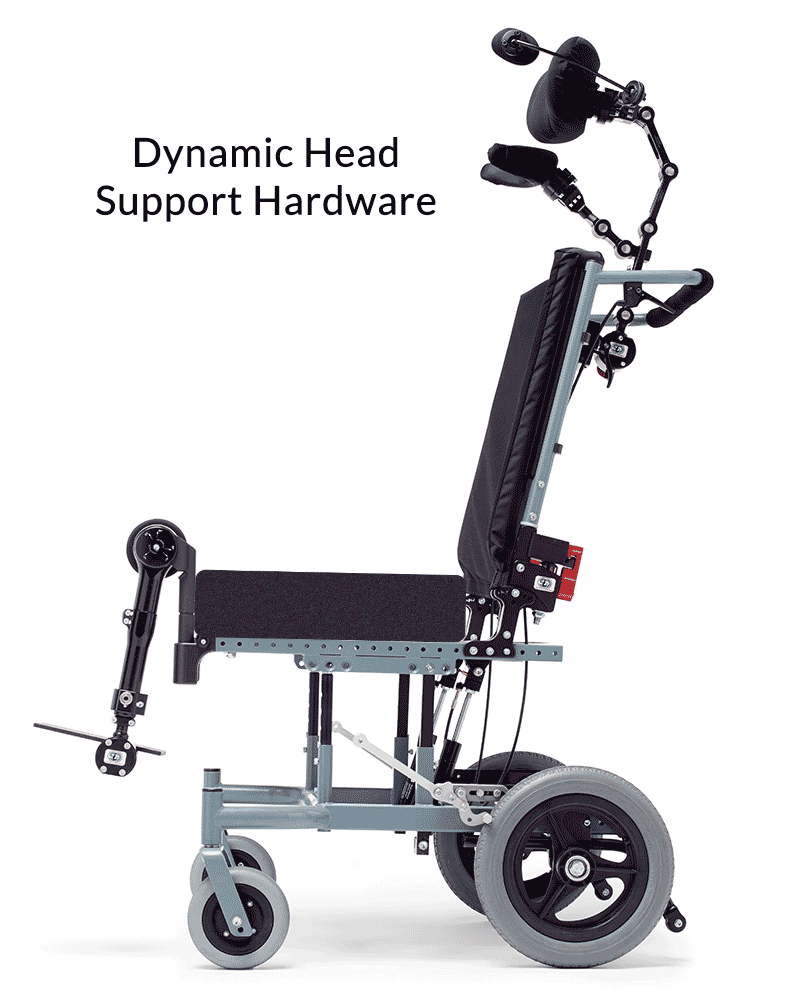
Explore Dynamic Head Support Hardware
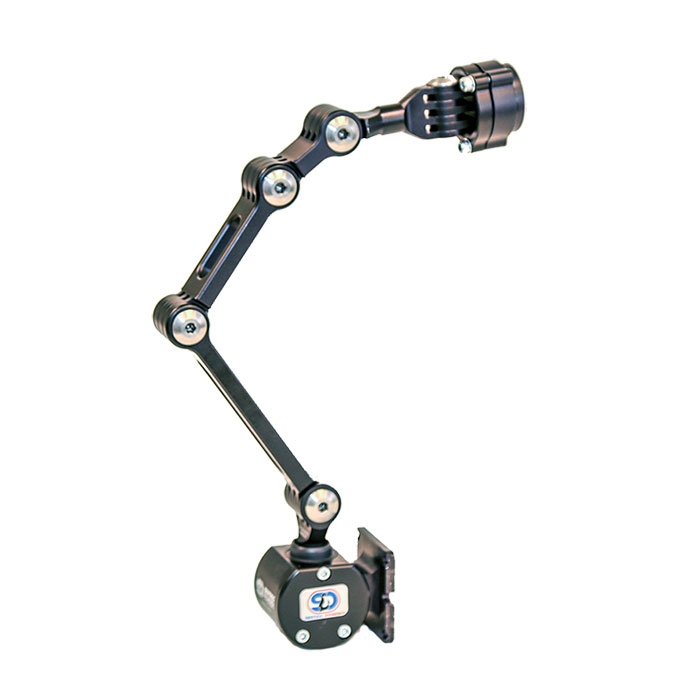
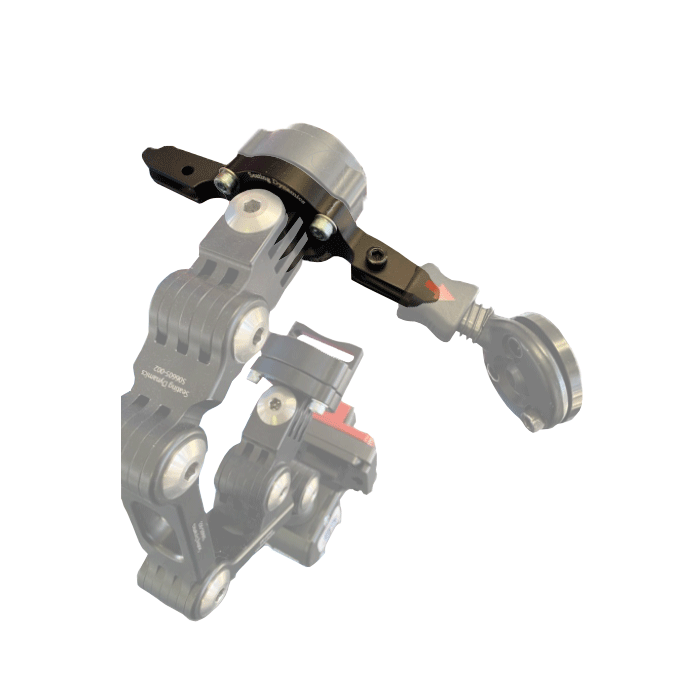
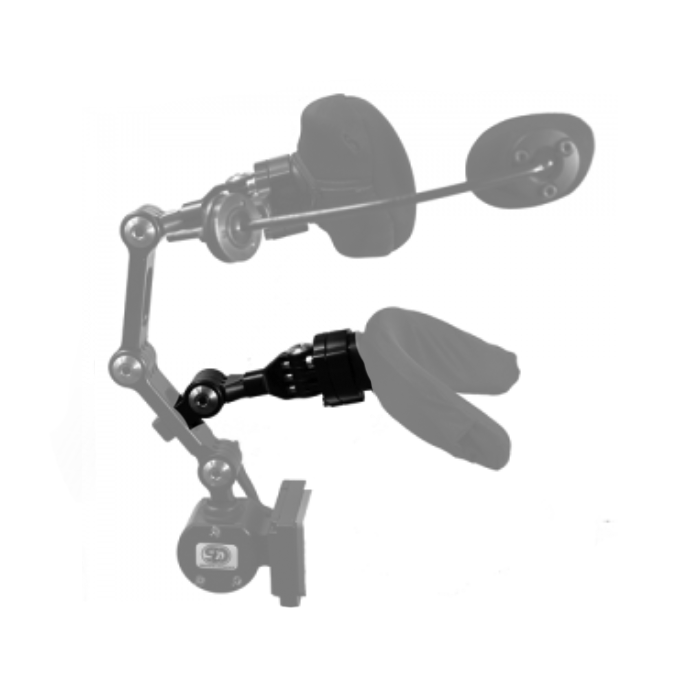
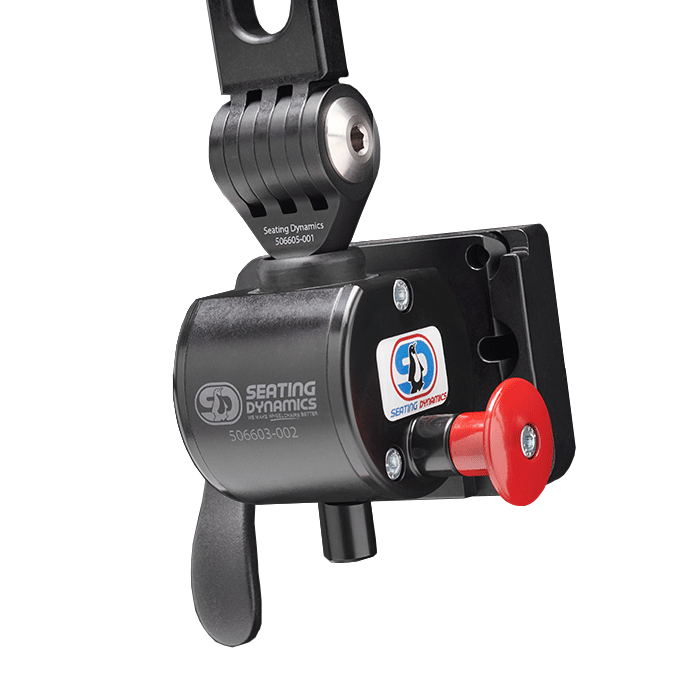
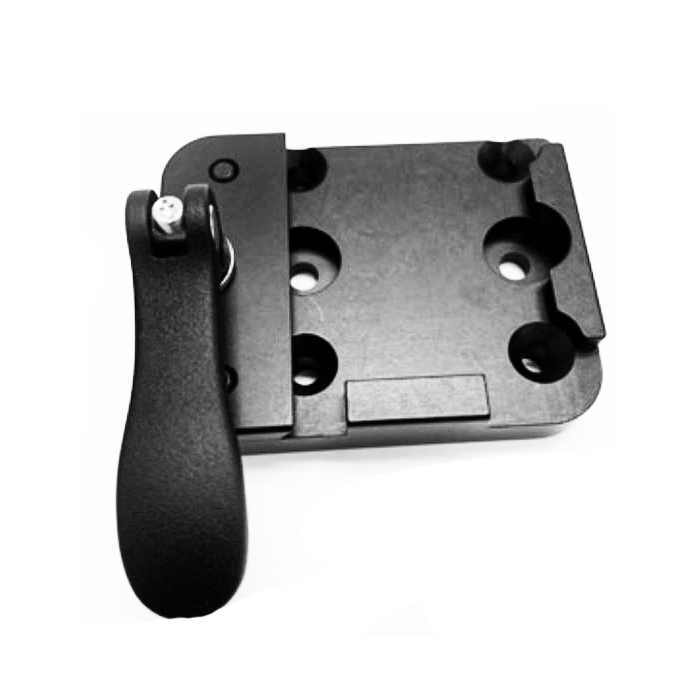
Clinical Application
The Dynamic Head Support Hardware moves posteriorly in response to client force, capturing posterior or rotational movement.
How does the ability to move affect equipment and the client?
- Forces are absorbed and diffused, protecting both the client’s head and neck from injury as well as the head support from loss of alignment or damage.
- Extensor tone is diffused, reducing overall tone and posturing, increasing function, and conserving energy.
- Movement is provided, which can assist in maintaining posture, increasing sitting tolerance, decreasing agitation, increasing alertness, and even increasing function.
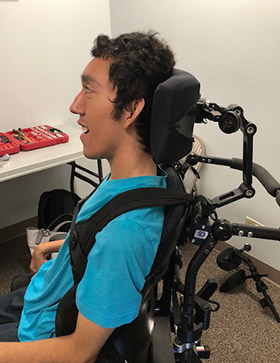
Jonathan has significant extension throughout his body secondary to cerebral palsy. He had a long history of breaking head support hardware. Dynamic Seating moves in response to his extension and assists him back to neutral positioning. Watch how it works.
Benefits of Dynamic Head Support Hardware
In Their Words
Diana Hoopes, PT
Wilmington, DE
“He loves it! This has saved the chair from breaking down because he has moving components now.”
Karen “Missy” Ball, PT, MT, ATP
PhysioBall Therapy, LLC
Metairie, LA
“I have used dynamic backs several times in the past for clients with head trauma or cerebral palsy with periods of high extensor tone that broke back canes or headrest hardware. Definitely a needed component for those clients.”
Robert J. (Joe) McKnight, ATP/SMS, CRTS
Director of Business Development – California, Nevada, Arizona
Numotion
Cerritos, CA
“The use of a dynamic headrest on this kind of patient should be the standard, not just to protect the equipment, but the patient.” Referring to clients who repeatedly contact their head support with significant force.
Watch Me Move
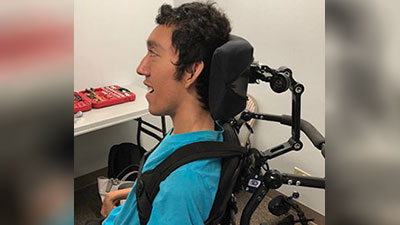
Jonathan’s Dynamic Head Support in Action
Jonathan has significant extension throughout his body secondary to cerebral palsy. He had a long history of breaking head support hardware and so a Seating Dynamics Dynamic Head Support was recommended. He has since also received a Dynamic Back and Dynamic Footrests. In combination, these components diffuse his extreme extension forces, preserving his posture and facilitating function.
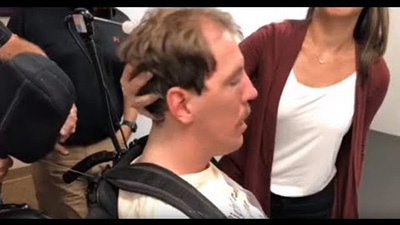
Determining if Dynamic Head Support Hardware is Appropriate
In general, if a client has moderate to significant neck extension, is seeking movement, and/or has a history of equipment loss of alignment or breakage, Dynamic Head Support Hardware may be appropriate. However, trialing this equipment can be challenging. How do you determine if this intervention is appropriate without actually trying it?
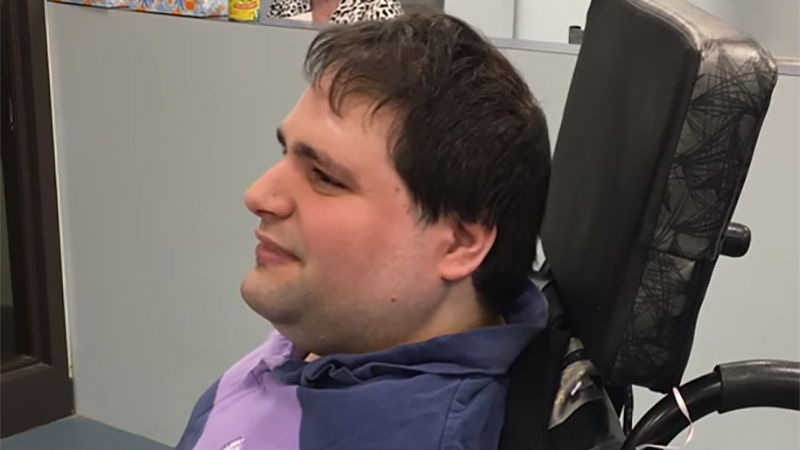
Accommodating repeated banging against a wheelchair head support
In this video, Phillip does not yet have a dynamic head support and has a bald spot on the back of his head from repeatedly banging against his current static head support. The current hardware has been reinforced to stop breakage. Phillip received his new Seating Dynamics Dynamic Head Support Hardware which moves with him, has prevented breakage, and his hair is regrowing!
Technical Information & Options
The Dynamic Head Support can be customized in a variety of ways and with the appropriate amount of resistance to optimize client use.
Resistance
- The hardware comes standard with Blue (firm) elastomers to provide movement and return the client to a starting position. Resistance cannot be changed.
Adjustability
- The links are available in three sizes: 2”, 4”, and 6”. Each Dynamic Head Support Hardware kit includes one of each of these link sizes. Extra link lengths are available. The various length links may be combined in any order to achieve the desired position and either 2 or 3 links can be combined.
Maintaining Alignment
- Our hardware replaces the ball and socket with a multiple disc finger joint. This provides a large degree of adjustment while maintaining position. This design provides over 3 times the clamping area, allowing the hardware to maintain position, even under extreme forces.
Lock Out/Enable Movement
- The movement provided by the Dynamic Head Support may be locked out or enabled as desired via a red knob on the component. Limiting movement via the lock out feature may be useful in the following clinical scenarios:
- During transportation
- When moving over rough terrain to limit excessive head movement, as needed
- During feeding to provide client stability, as needed
- During any other functional task where more stability is required
Seating Dynamics Dynamic Head Supports manufactured after February 2023 will include the Lock Out feature. If you have existing Dynamic Head Support Hardware, we can provide a retrofit kit. Just contact us.
Head Support Pad Compatibility
- Matrix Elan
- Permobil / Comfort Company BodiLink
- Spex
- Stealth Products
- Symmetric Designs Savant
- BioDynamics
- ASL ATOM head array
- Therafin Flat, Molded, Pro-Fit Adjust, Pro-Fit Soft, and Tri-Form
- Whitmyer
Stealth Products lateral rods and pads are also supported when using our optional lateral component hardware. Stealth Products or Whitmyer sub-occipital pads are supported when using our optional sub-occipital pad adaptor.
Our hardware is compatible with a standard 2" x 2" or 2" x 1" 4 hole mounting plate and requires 3.5" of space behind the mounting surface.
Connect with Seating Dynamics
Dynamic Head Support Hardware Resources
Quick Class: Maintaining Posture in a Wheelchair by Providing Movement with Dynamic Seating
Explore why clients lose their posture in a wheelchair & how Dynamic Seating can help.
Read MoreFree CEU: Introduction to Dynamic Seating for Wheelchairs
Join OT Michelle Lange on demand for An Introduction to Dynamic Seating for Wheelchairs with IACET CEUs provided by NRRTS as an authorized provider.
Read MoreWhat is Dynamic Seating? A Definition
Our most-read blog is one that defines Dynamic Seating. That initial blog was posted about 4 years ago, so we wanted to revisit this foundational topic.
Read MoreADDITIONAL OPTIONS for product users
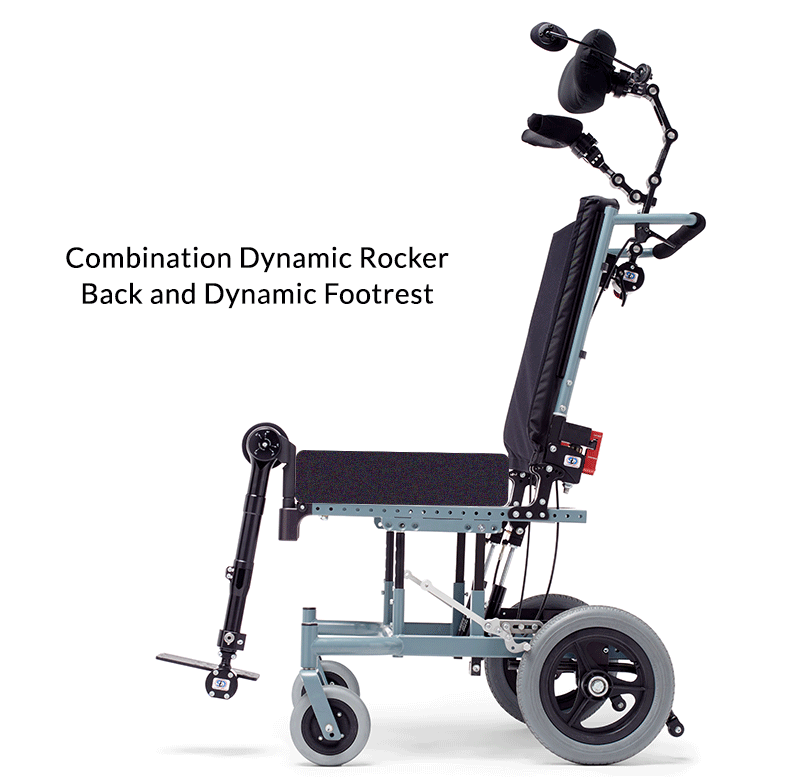
Combined Dynamic Back & Foot Components


